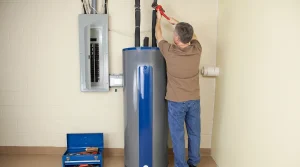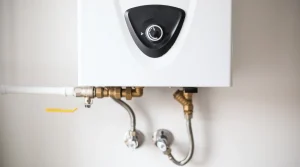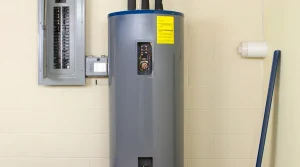Your central heating circuit will eventually start to fill with air. As a result, cold spots emerge and the panels are less effective at dispersing heat. Therefore, one of the simplest things you can do to increase operational efficiency and increase comfort in your home is to flush the radiators all over it.
The video below with Craig Phillips as the host best explains this straightforward procedure. Recall him? The Big Brother 1 contestant who was generally good? However, it just lasts three minutes, so watch it. There are also some straightforward instructions below.
you’ll require:
- flathead screwdriver or
- a radiator key
- used rags or a sponge
Step 1:
Turn on the heater and warm up the radiators all throughout your house. Additionally, this will increase the pressure inside the radiators.
Step 2:
After that, go around each radiator and notice any that have cold spots, which are typically located near the top of the panel. The air has accumulated here.
Step 3:
Turn off the heating system, and then begin bleeding the radiators after a brief period of radiator cooling. Some valves have a slot in them that will accept a flathead screwdriver if you don’t have a bleed key.
To release the extra air, use the radiator bleed key, preferably one made of brass. Slowly counterclockwise-rotate the square bleed screw or screwdriver. As the air escapes, you can hear it hissing. Any drips of water should be collected using rags or sponges. You will get a jet of water rather than a drip once all the air has been let out. Quickly close the valve and tighten it.
Radiators should be completely bled one at a time.
Step 4:
Restart the central heating and recheck your home for cold spots. If required, repeat the procedure.
Step 5:
The pressure on the boiler may be too low to force the air out if, despite following the steps above, no air escapes. To top up the pressure, follow the instructions, which are typically located on the boiler’s front panel.
Additionally, if the process is successful, the boiler’s pressure might have dropped and need to be topped off.
It’s as simple as that.




